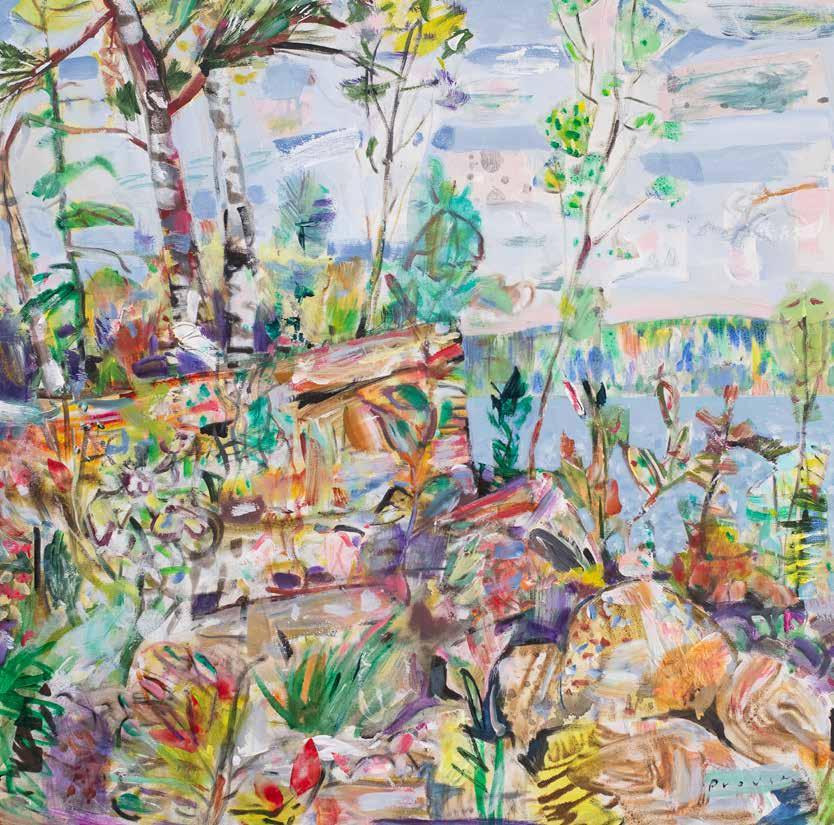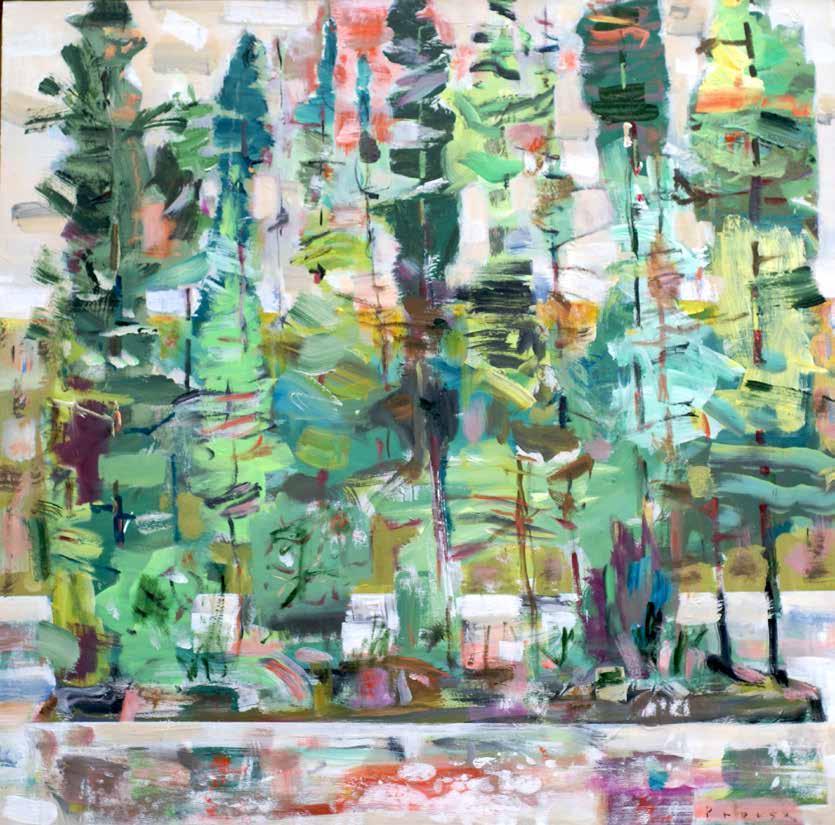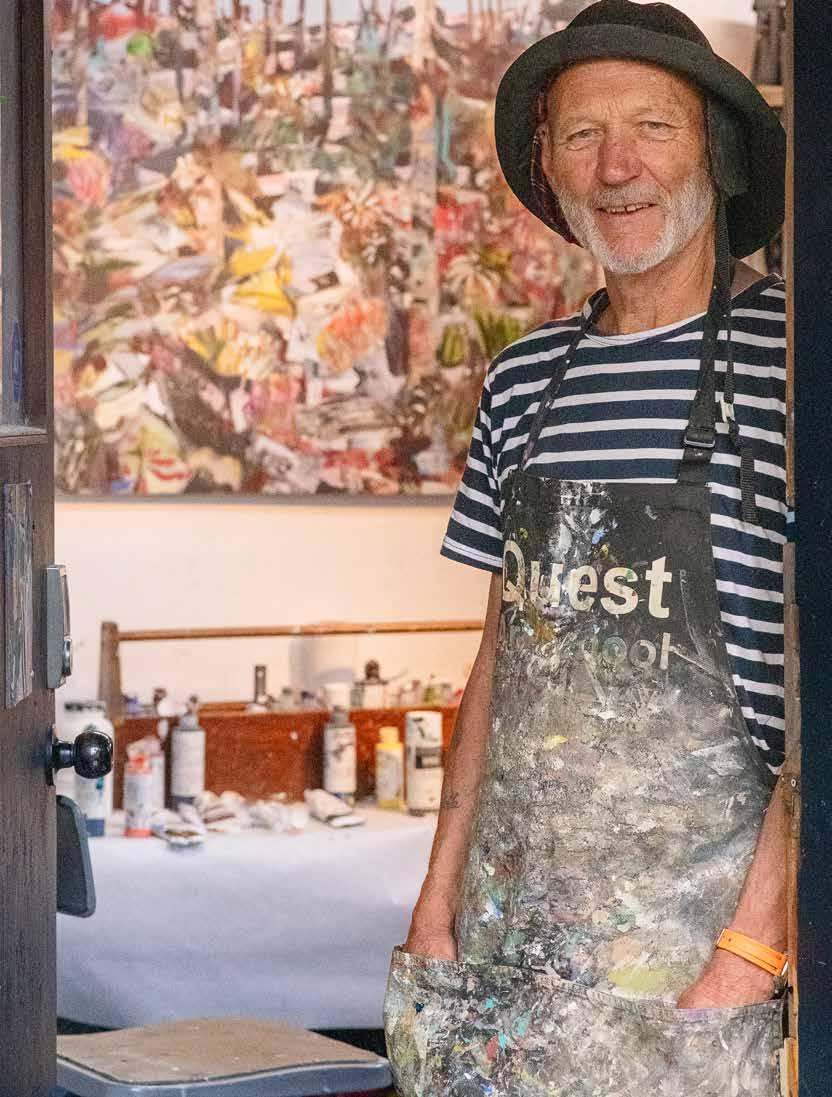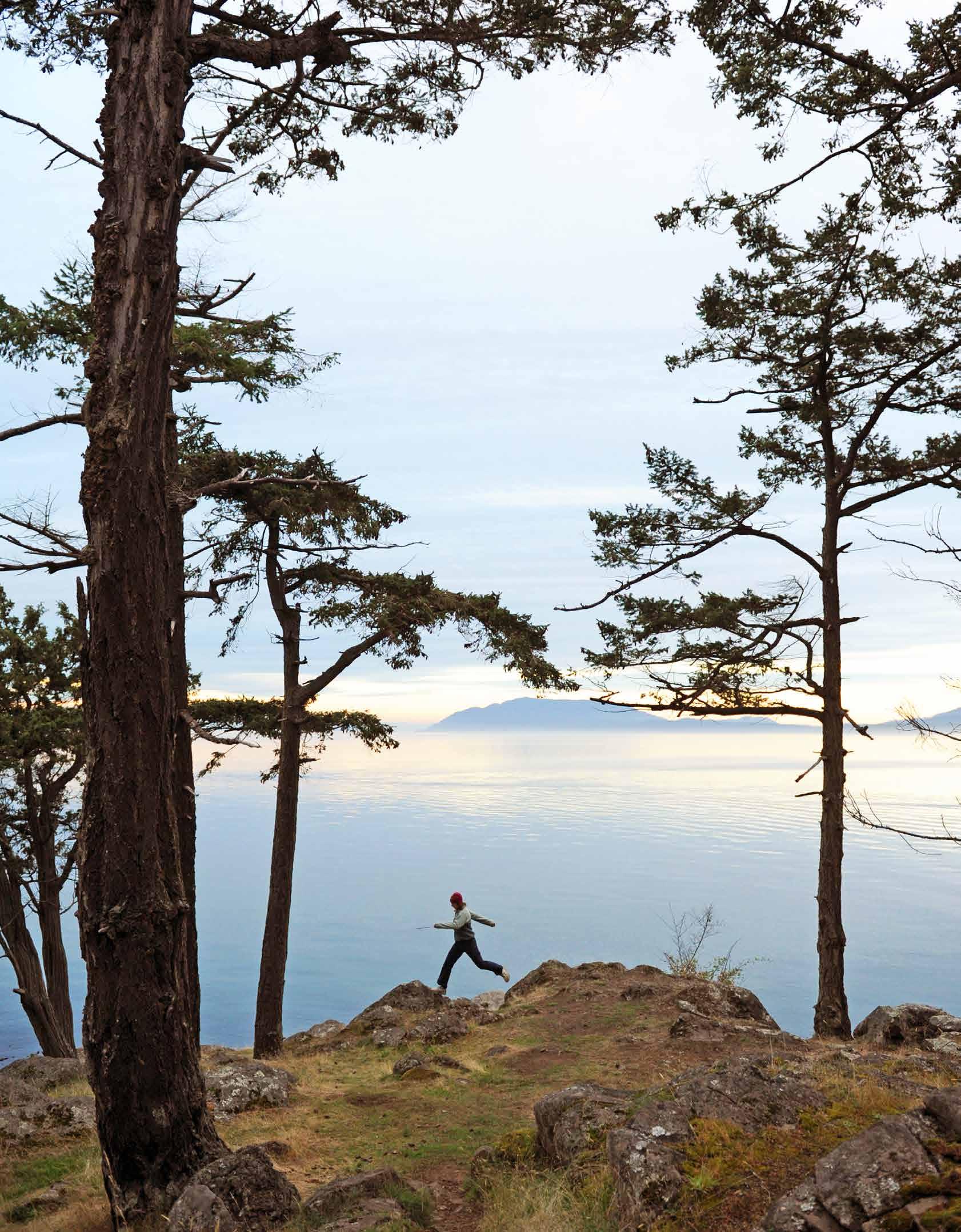
4 minute read
From Canoe to Canvas
The expressionistic landscapes of Rod Prouse
words :: Nadia Pestrak photos :: Kristin Schnelten
There is no shortage of artists who depict Georgian Bay. The allure is understandable: rock, trees, water, sky, light. A handful of elements to be painted in infinite ways. Still, in the shadow of the Group of Seven, artistic interpretations of Georgian Bay can get a bit formulaic. It takes a strong artistic vision and talent—like that of Rod Prouse—to stand apart. Ever been indoors too long and then emerged outside into a beautiful place? Prouse’s expressionistic, colourful landscapes give this sense of stepping into a lush natural world full of possibility. With movement in his brush strokes, his style has aptly been described as “rural graffiti” and he seeks to capture not the literal representation of place but its feeling. Given the active joy with which he inhabits the landscapes he paints, it’s no surprise that Prouse is so good at this task.

Prouse has been a full-time artist nearly as long as he has been living. “I know the guy in the fish store and I gave him a Christmas card. When he asked how long it took me to paint it, I said, ‘It took 79 years and three months.’”
After graduating from the Ontario College of Art (now the Ontario College of Art & Design University, or OCAD) in 1968, Prouse had brief stints in graphic arts and teaching before moving to Chester, NS, where he and his father (also an artist) opened a gallery. In 1976 Rod was picked up by the Canadian Fine Arts Gallery in Toronto, with his first show selling out. Since then, Prouse has painted and shown his work across Canada and internationally to widespread acclaim. While constant in his vocation, he’s never predictable. He’s worked collaboratively with other artists (including dancers and composers), and has integrated new media and video into his work. Prouse’s art, while landing with care and intention, is underlaid with innovation and exuberance. Consider his prints. Put aside the image of the usual delicate, palm-handled carving tools: Prouse uses power tools to carve his big block prints.


Exuberance also characterizes his relationship with the outdoors. In fact, Prouse’s outdoor spirit is as deep a through line as his art, and the two are intertwined. For Prouse, being in nature organically extends into its depiction. His life has been spent outdoors, whether hiking, windsurfing, canoeing, swimming, cycling, sailing or boating.
“The canoe has been my northern vehicle ever since I was 17,” he says. “But I’ve done it all on the water: water skiing, seafleas, sailboats. I once sailed a Hobie Cat all around the bay. I used to be a really good windsurfer; I’d go out in 50 km/h winds.” not afraid to take risks. There’s a confidence that comes after decades of painting.” – Sarah Beveridge, Blue Gallery
Prouse shrugs off the extent of his outdoor spirit. “Growing up on Georgian Bay helps. There wasn’t much to do in the summertime when I was a kid. We had a guy on the beach who was a diver, but he used an old sponge-diver helmet. He made a group of us kids a diving outfit that consisted of a World War II gas mask, a garden hose and an air pump. We walked along the bottom with air blowing in our faces.” (Don’t try this at home, kids.)
When Prouse speaks of his life, his stories sparkle with anecdotes, like tales from a traveler. It seems that while Prouse may appreciate the accolades he’s received as an artist, it’s not what really interests him. He talks of living in Yellowknife, where he’d bring his notepad to the bar. “I’d just start sketching somebody, and all of a sudden I’d get invited to a table, and a beer would appear beside me.” Although the subject would often purchase his drawing, it wasn’t a sale he was after, and probably not even the beer: It was the simple act of sketching, the interaction with interesting people and the reward of their stories.
These stories are the heart of Prouse’s work. As he says, “I look behind the curtain of what’s seen to reveal narratives within the landscape.”
“You ever watch people walking on the beach?” he asks. “They pick things up: a stick, a rock, a fish skeleton. People connect with the landscape in this way. Here they are in this amazing landscape, and instead of looking at the whole thing, they are getting their clues from stuff they pick up. These become pivot points. Driftwood: I was once a tree. I was once a fish, I swam. I am a rock, millions of years old. These are nodes of recognition, suggestions, that pull us along.”
These days, Prouse is settled (if such a word can be used of such an active, engaged person) in a cottage in Tiny Township, with its view of the Georgian Bay. When asked how he interacts with nature now, as an octogenarian, he declares, “I can still bike, hike, canoe, sail, swim and dance, so not much of a change there. My dialogue with nature and art is, if anything, stronger. More time to ponder and more tools in the toolbox.” He’s certainly still painting.
Sarah Beveridge, who owns Blue Gallery in Thornbury, is both an artist as well as a curator of Canadian contemporary fine art and has worked with Rod for more than 20 years.
“Rod works en plein air, from gouache sketches,” she says. “He immerses himself in the landscape. I love that you can feel that energy in the work, the sense of abandonment and play, pushing and pulling the landscape. He’s not afraid to take risks. There’s a confidence that comes after decades of painting.”
With movement in his brush strokes, his style has aptly been described as “rural graffiti” and he seeks to capture not the literal representation of place but its feeling.
With his outdoor spirit and talent, Prouse is situated perfectly in the Georgian Bay to keep delighting in the nature around him, and then to pick up his paintbrush and let the stories come.




